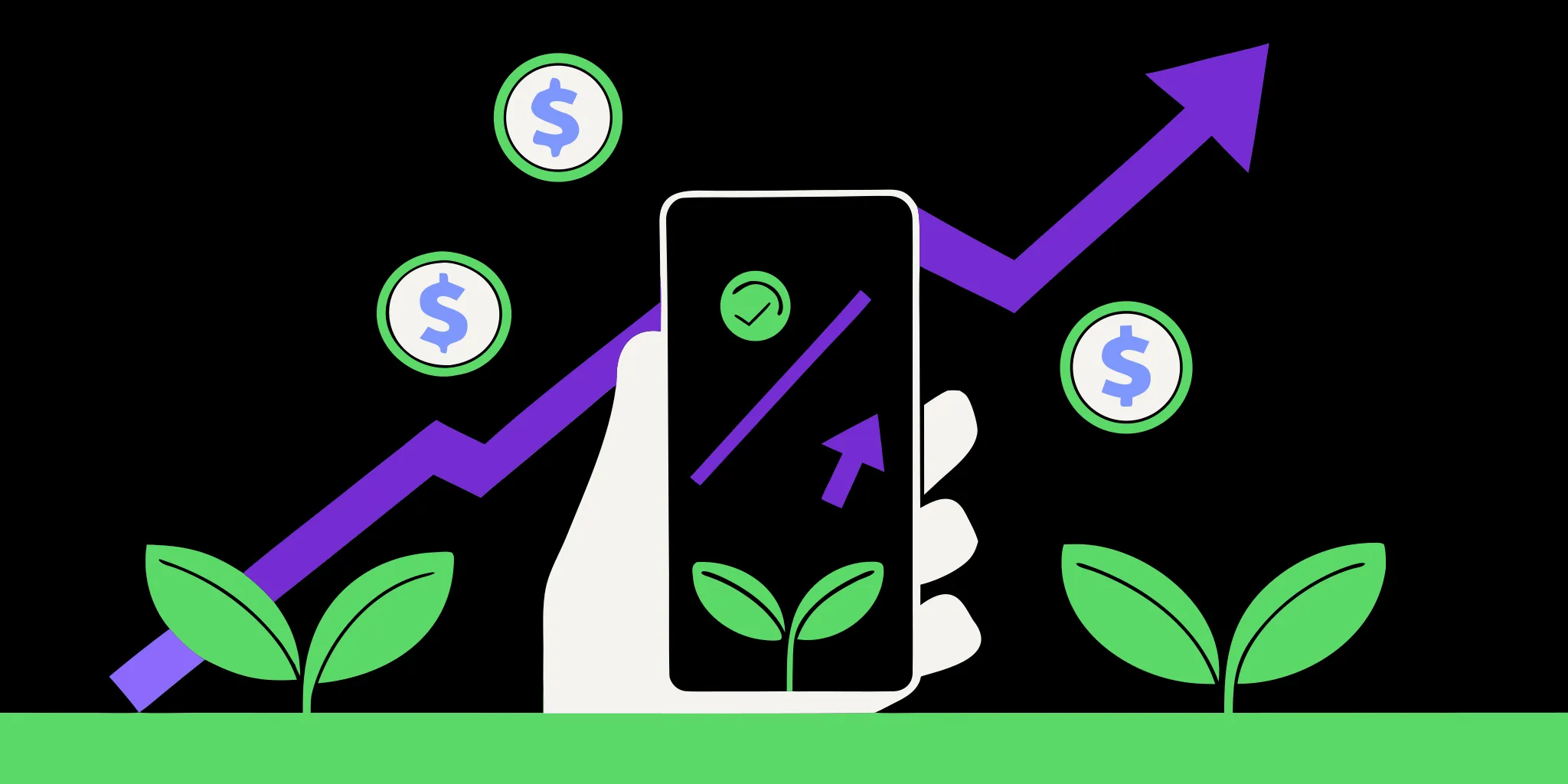
Part 1: What is Direct Messaging Acquisition?
At its core, direct messaging acquisition is all about using platforms like Facebook Messenger, Instagram DM, or even WhatsApp to communicate with your supporters one-on-one, at scale. Instead of hoping they open your email or read your SMS, direct messaging lets you build meaningful, personal connections in real-time.
It’s not just a new channel—it’s a completely differentiated and complimentary communication strategy to your existing channels like email, direct mail, and SMS. The idea isn’t to replace those channels; it’s to amplify what you’re already doing by introducing a channel where supporters are already spending their time—on social media.

Why Direct Messaging is the Future
Let’s break this down. The modern nonprofit supporter is flooded with communication—from brands, causes, friends, family—you name it. According to HubSpot, more than 293 billion emails are sent daily across the globe. If your emails are getting lost in a sea of promotions and updates, it’s not surprising.
SMS is a great backup, but there’s no denying it’s a one-way street. Sure, people read their texts (98% open rate according to Campaign Monitor), but how many times have you actually replied to a mass text from a company? Exactly.
Direct messaging changes that. It’s interactive, personal, and—unlike SMS or email—two-way. When you send a message, you’re starting a conversation, not just pushing content. And here’s the kicker: you’re building a relationship directly within platforms like Facebook or Instagram, where supporters are already active, instead of dragging them to another app.

Nonprofits are Already Doing the Work—Now It’s Time to Monetize It
Here’s the best part: you’re already doing the hard part. Every time you post on Facebook, you’re building your brand. Every time you run a direct response campaign, you’re putting your message out there. You’ve built a community on social media, but chances are, you haven’t fully tapped into that engagement for fundraising.
Imagine if every post you made on social media wasn’t just about likes and shares, but led directly to conversations that turned into donations.
Let’s get tactical. Here’s how direct messaging can supercharge the work you’re already doing:
- Leverage Your Existing Social Media Presence: You’re already posting, but instead of hoping people click through to your donation page, use Facebook Messenger or Instagram DM acquisition tools to start a conversation. Ask a question, engage in real-time, and turn that interaction into a donation opportunity.
- Automated Engagement: With tools like GoodUnited’s automated flows and campaign features, you can guide supporters through a series of interactions—starting with a simple question and ending with a donation. Best part? It’s all automated.
Direct Messaging is a New, Attributable Revenue Channel
Here’s the key: direct messaging is not just another communication tool—it’s a revenue-generating engine.
We’ve seen this in real-time with GoodUnited’s clients. Take the example of Colorectal Cancer Alliance’s Case Study: using proactive messaging, this nonprofit turned casual social media interactions into $3,750 in attributable revenue with ZERO ad spend and in a single day. And guess what? This revenue was 90% from new supporters—people who hadn’t engaged with the organization through any other channel.

When you’re engaging through direct messaging, you’re not waiting months for SEO or paid ad campaigns to bring in donations. You’re actively talking to supporters, building relationships, and seeing real-time returns.
Direct Messaging Complements Email, Direct Mail, and SMS
Now, some of you may be thinking, “But we’re already doing email and SMS. Why add another channel?”
Because direct messaging doesn’t replace those—it complements them.
Here’s how:
- Email: Emails are great for long-form content, detailed reports, and newsletters. But if you need immediate engagement, direct messaging beats email hands down. A message on Facebook Messenger or Instagram DM is personal and interactive. People are more likely to respond in real-time.
- Direct Mail: Direct mail has its place, especially for major donor campaigns, but it’s a slow process. Direct messaging is instant and scalable, perfect for micro-donations or monthly giving programs.
- SMS: While SMS has a great open rate, it’s not conversational. You can send reminders or alerts via SMS, but if you want to have a back-and-forth dialogue that leads to a donation, direct messaging is where it’s at.

By adding direct messaging to your existing strategy, you’re not just increasing the number of touchpoints with supporters—you’re creating a seamless experience that moves them from awareness to action faster than ever before.

Real-Time Insights for Smarter Campaigns
Another advantage of direct messaging? Real-time insights.
Unlike email, where you might wait days or weeks to get metrics on open and click-through rates, direct messaging gives you instant feedback. You know immediately if someone opened, read, or responded to your message. You can tweak your messaging on the fly based on supporter responses.
GoodUnited’s insights dashboard allows you to track every interaction, analyze conversation trends, and optimize your future campaigns. The result? Data-driven decisions that lead to better engagement and more donations.
Getting Started with Direct Messaging Acquisition
So how do you start building a direct messaging acquisition strategy? Here’s a simple framework to follow:
- Identify Your Audience: Not every supporter will be on Facebook Messenger or Instagram, but the ones who are? They’re ready to engage. Start by identifying which segments of your audience are most active on social media.
- Opt-In and Grow Your List: Use opt-in strategies like comment-to-messenger or click-to-messenger ads to start building your list of direct messaging subscribers.
- Automate Onboarding: Guide new subscribers through a series of conversations that build rapport and lead to their first donation.
- Track and Optimize: Use GoodUnited’s dashboard to monitor conversations, track engagement rates, and refine your approach.
Conclusion: It’s Time to Add Direct Messaging to Your Playbook
Direct messaging isn’t just the future—it’s happening right now. Nonprofits across the board are using it to turn social media engagement into real, attributable revenue.
By adding direct messaging to your communication strategy, you’re not only reaching more people where they spend their time—you’re building relationships that last.
It’s time to start seeing your social media work for what it truly is: a goldmine waiting to be tapped. With direct messaging, you can finally monetize your social media presence, bring in new supporters, and grow your nonprofit’s revenue in ways you never thought possible.
Part 2: Laying the Foundation - Understanding Passive Acquisition
Introduction: The Power of Passive Acquisition
Imagine if your supporters could subscribe to your messaging list without you even asking. That’s the magic of passive acquisition—an approach where people opt in organically, without direct promotion. In a world where the cost of new donor acquisition continues to rise (up 23% year over year, according to M+R benchmark reports), passive acquisition is like finding hidden gold in a crowded fundraising market.
Passive acquisition allows nonprofits to engage with their audience in a way that feels natural, non-intrusive, and effortless. When done right, it builds a steady stream of new supporters who are already interested in your cause. In this part, we’ll break down exactly how you can tap into this strategy and turn casual visitors into engaged subscribers.

What is Passive Acquisition?
Passive acquisition is all about creating opportunities for potential supporters to join your messaging list without feeling like they’re being sold to. It leverages simple but powerful acquisition tools like comment triggers, default opt-in links, and Messenger chat plugins to encourage engagement.
Unlike proactive strategies that require a direct call-to-action, passive methods operate quietly in the background. They turn everyday interactions into opportunities for connection. Let’s dive into these techniques and see how you can implement them for maximum impact.
.png)
The Tools of Passive Acquisition
1. Comment Triggers: Turning Engagement into Subscriptions
What it is: Comment triggers are automated responses that invite people into your Messenger conversation when they comment on a post. For instance, when someone leaves a comment on your Facebook post, they receive an automatic reply that encourages them to opt-in to your direct messaging.
Why it works: This technique feels organic because it’s triggered by a user’s action. They’ve already expressed interest by commenting, so continuing the conversation in Messenger feels like a natural next step.
How to Implement:
- Step 1: Create your post on your organization's main Facebook page.
- Step 2: Using a Messenger chat application set up your comment-on-post to Messenger automation.
- Step 3: Next, create the Messenger experience you’d like those supporters to receive.
- Step 4: Publish the Messenger journey and boom, get ready to acquire subscribers and build relationships through direct messaging.
.png)
2. Default Opt-In Links: Making It Easy to Subscribe
What it is: Default opt-in links are direct links that lead people straight into a Messenger conversation with your organization. These links can be placed on your website, social media profiles, or even in email signatures, inviting people to start a conversation with just one click.
Why it works: People are more likely to engage when the action is simple and straightforward. With default opt-in links, there’s no need for complicated forms or lengthy processes—just a quick click, and they’re in!
How to Implement:
- Step 1: Giving Tools must be enabled on Facebook and your page has to be listed as a “nonprofit” page.
- Step 2: All organically created fundraisers and donors will have the opportunity maintain the selection for default opt-in to Messenger during the outro of the fundraiser creation process.
- Step 3: Find these Messenger subscribers in your Messenger application tool of choice.
- Step 4: Devise content and experiences catered towards cultivating relationships with these new subscribers directly in Messenger.
.png)
Why Passive Acquisition Matters
Industry data shows that successful subscriber acquisition isn’t limited to e-commerce or tech companies; nonprofits can thrive using these methods too. For example, organizations across different sectors have seen a 30% increase in subscriber growth by implementing passive strategies.
Passive acquisition doesn’t just grow your list; it builds a list of highly engaged supporters. These individuals are already interested in your cause, making them more likely to participate in campaigns, donate, and share your message.

Common Mistakes and How to Avoid Them
To make the most out of passive acquisition, steer clear of these common mistakes:
- Being Too Salesy: Passive methods should feel natural. It’s a two-way conversation. Avoid overly promotional language that could turn off potential supporters.
- Neglecting Follow-Up: The real magic happens when you nurture these subscribers. Automated sequences can help, but make sure they feel personalized.
- Overcomplicating the Process: Keep it simple. The easier it is for someone to opt-in, the more likely they’ll do it.
Looking Ahead: Part 3 - The Next Step in Your Journey
Passive acquisition is just the beginning. It’s the foundation upon which you’ll build more proactive strategies that can drive even greater engagement. In the next part, we’ll dive into proactive techniques that will turbocharge your subscriber growth, turning passive interest into active engagement.


















